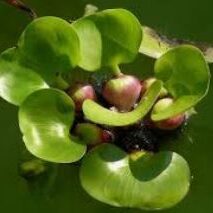Monet's Garden
In 1893, ten years after his arrival at Giverny, Monet bought the piece of land neighbouring his property on the other side of the railway. It was crossed by a small brook, the Ru, which is a diversion of the Epte, a tributary of the Seine River.
The water garden
In this water garden, you will find the famous Japanese bridge covered with wisterias, other smaller bridges, weeping willows, bamboo wood, and above all the famous nympheas which bloom all summer long. The pond and the surrounding vegetation form an enclosure separated from the surrounding countryside.
Never before had a painter so shaped his subjects in nature before painting them. And so he created his works twice. Monet would find his inspiration in this water garden for more than twenty years. After the Japanese bridge series, he would devote himself to the giant decorations of the Orangerie.
Always looking for mist and transparencies, Monet would dedicate himself less to flowers than to reflections in water, a kind of inverted world transfigured by the liquid element.
The Japanese bridge
Monet had it built by a local craftsman. By the time the garden was restored the bridge was too damaged to be saved. It had to be rebuilt by a firm from Vernon. It is made of beech wood.
The wisterias have been planted by Monet.
After Claude Monet's death in 1926, his son Michel inherited the house and garden of Giverny. He did not live there and it was Monet's step-daughter Blanche who took care of the property. Unfortunately after the Second World War the house and garden were neglected. In 1966 Michel Monet made the Academie des Beaux-Arts his heir.
In 1977 Gérald van der Kemp was appointed Curator at Giverny. André Devillers, who had the opportunity to go with Georges Truffaut - a distinguished gardener often invited to Monet's table - helped him reconstruct the garden as it was by the time of the master. Many contemporaries of Monet testified also.







